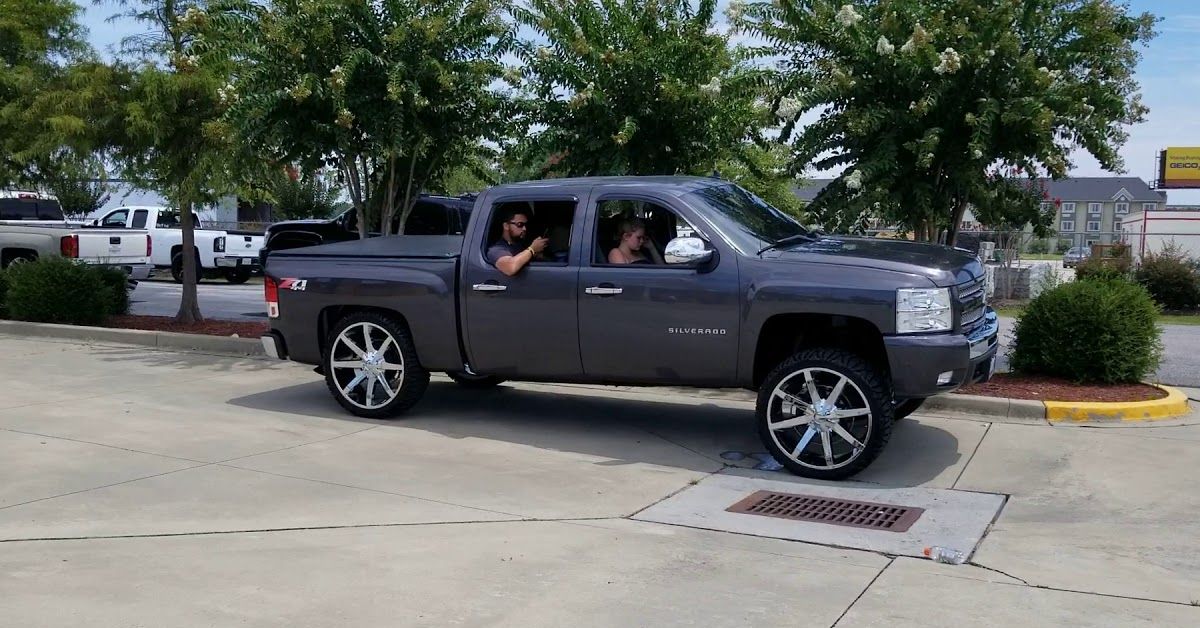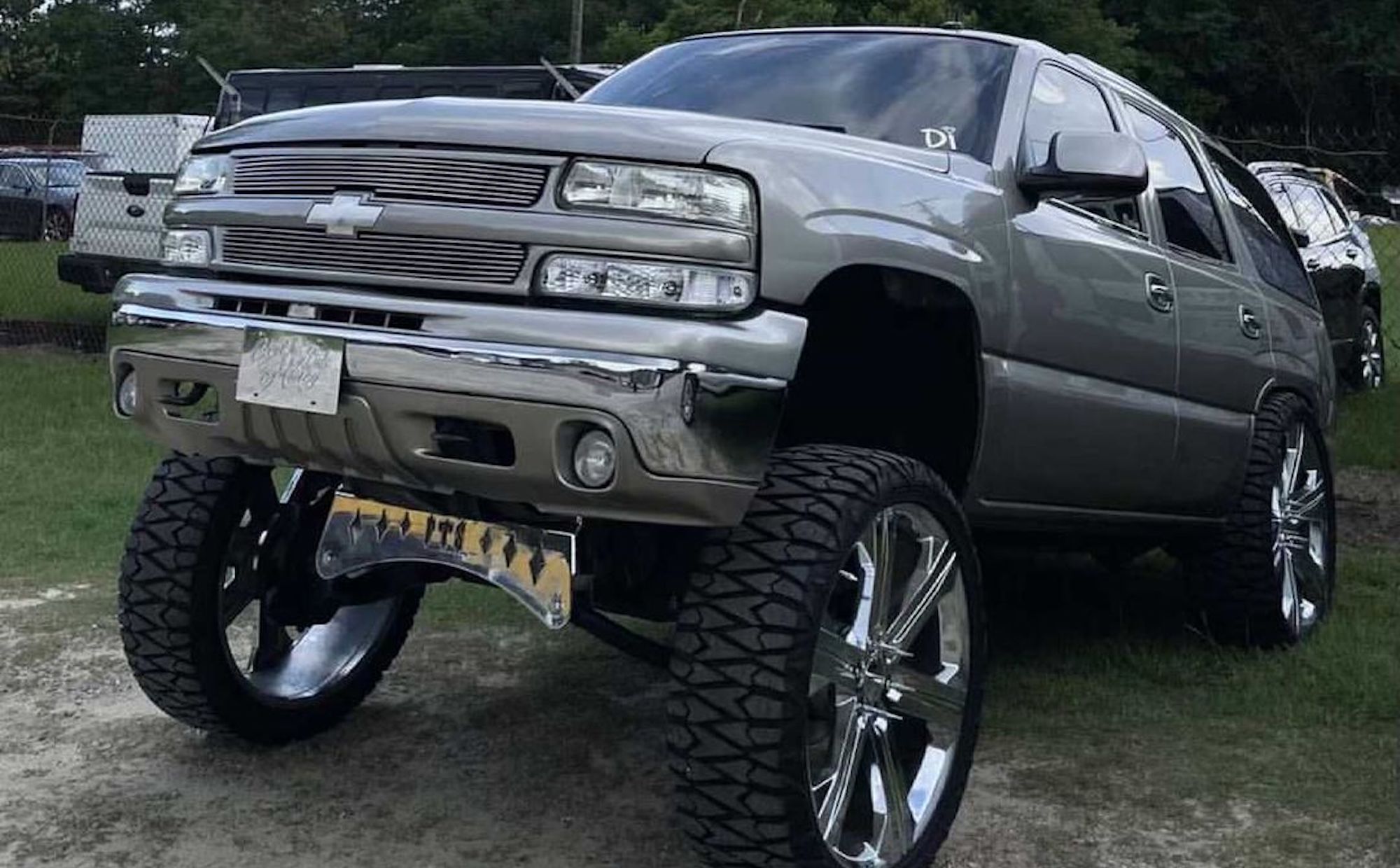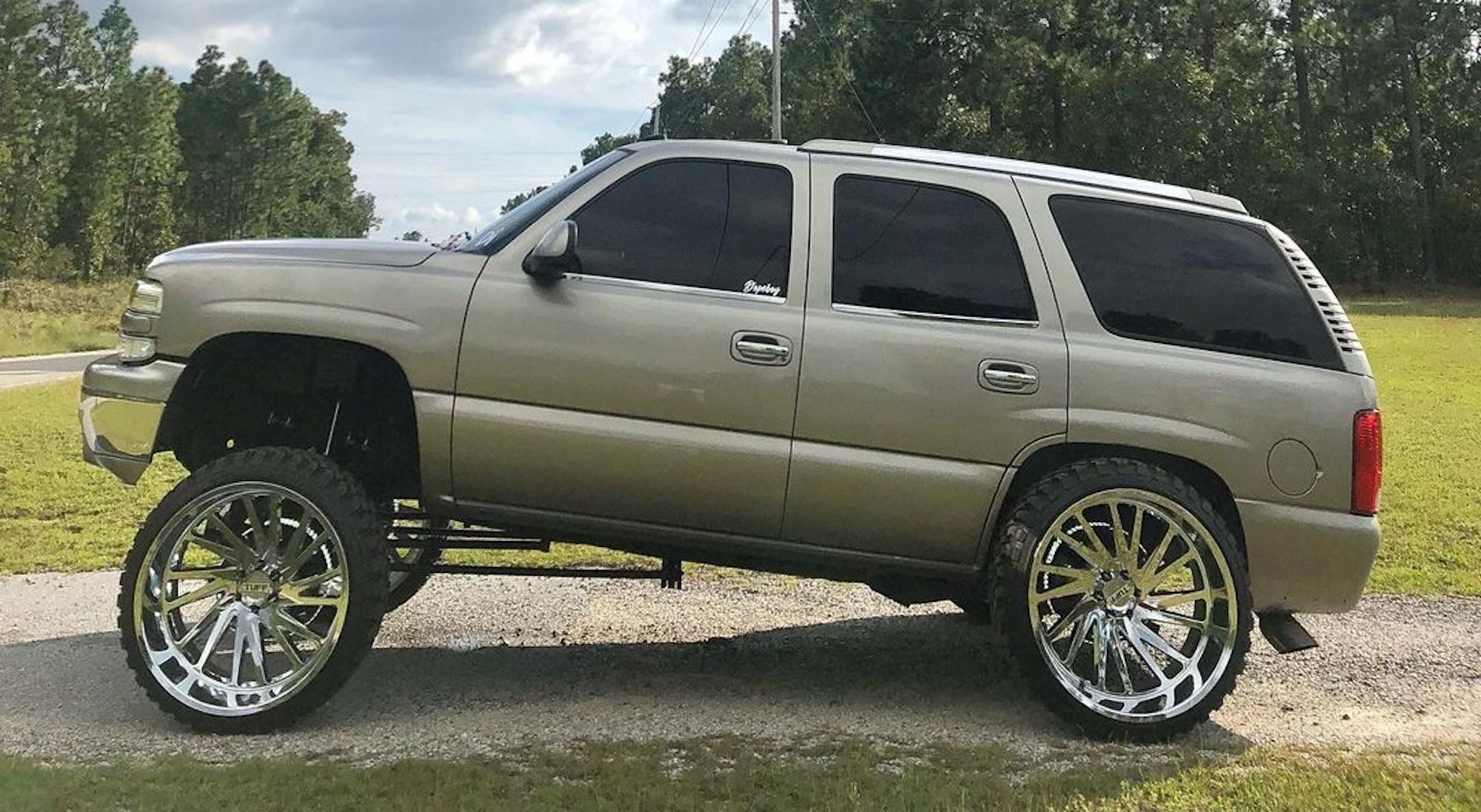The "Carolina Squat" is a weird trend where truck owners modify the suspension of their vehicle, so the front is pointing towards the sky and the rear end is pointing downward. The trend actually didn't originate in Carolina as the name suggests; it was born out of Baja Racing in California and became popular after hundreds of drivers posted photos of their squatting vehicles on Instagram. Because of this, the Carolina Squat became a trend that caught on all over the country, especially in the southern states, as well as in North and South Carolina.
Updated February 2022: After an online petition calling for the vehicle modification's banning in North Carolina gained traction, the state officially outlawed the Carolina Squat. In light of this recent development, we revisited this article to provide more relevant information about this polarizing modification in the auto community.
By raising the front of their trucks and simultaneously lowering the back, it will result in a large rake. For added squat effect, they may even try to fit the biggest wheels and tires possible on their vehicle. It goes without saying that this trend offers little in the way of practicality for vehicles and, instead, brings many disadvantages.
There are several high-performance trucks on the market right now, and it's no surprise that none of them come pre-squatted. The Carolina Squat renders trucks virtually useless in terms of performance and for carrying any cargo, and visibility over the hood is extremely reduced. And those aren't the only problems the Carolina Squat brings with it. There are many ways to modify a truck to perfection, but this isn't one of them.
Read on to find out more about the history and effects of the Carolina Squat.
Contrary To The Name, 'Carolina Squat' Originated In California
Contrary to popular belief, the Carolina Squat began in California, which is why it was also referred to as the "California Lean" or "Cali Lean." The trend emerged from Baja racing in California.
Seeing as Baja racing takes place in the desert, the Carolina Squat actually had a practical purpose. Because of its raised front end, the rear was the first part to strike the ground when going faster, thus lessening the chances of crashing.
Outside of desert racing, however, people give their trucks the Carolina Squat purely for style and in an attempt to impress others. After all, unless people are driving off-road at high speeds, there's less of a practical incentive to have the mod.
Instagram Popularized The Truck Trend
We have social media to thank (or blame) for the Carolina Squat's rise to popularity. While there are some debates regarding the specifics, most people agree the trend caught on after lots of people posted photos of their squatting trucks on Instagram.
There are thousands of followers of truck squat-dedicated Instagram pages. The trend is also known as truck squat, truck lean, squatted truck, or the Carolina lean, and it has mainly caught on in North Carolina, South Carolina, Louisiana, and Georgia.
Truck modification culture has also adopted the trend to some degree, with certain aftermarket parts manufacturers acquiescing to the market demands and bringing out truck squat modification kits. The look is most often found on independent front suspension trucks.
The front end of the truck gets lifted using either a ball-joint lift or a torsion bars adjustment, and the truck's rear end can either be running standard or lowered ride height. The whole thing started a few years ago, and despite all the criticism, it has recently developed into quite a trend.
The Carolina Squat can be prominently featured on truck forums or on Facebook truck groups. Some of the best trucks, as well as trucks people may avoid, have been modified to squat. Some trucks work better than others.
Not All Mods Are Harmless: The Squat's Dangers
Unfortunately, the Carolina Squat is very impractical, and also very dangerous. A lot of issues, problems, setbacks, and liabilities arise when squatting a truck. Not only does it change the look, but it also changes the function and handling of the vehicle. Just look to the petition on Change.org for examples.
People who squat their trucks lose all capability to tow a load because the tail end is already on the ground. Even worse, if the front end of the truck is higher than the rear end, the headlights are going to be pointed towards the sky instead of illuminating the road ahead. Third, the truck being angled will compromise the driver's view of what's ahead, which makes it unsafe.
Altogether, a perfectly standard truck safe to drive on the open road has now become a liability to the driver and a danger to others once squatted. Even the best performance trucks on the market seem to be victims of this trend.
How To Fix The Squat
Thankfully, there are ways for drivers to repair their vehicles, so they stay level and no longer squat. For trucks that have been modified to squat, the solution is to just fit the standard components, and voilà, the truck is now un-squatted.
However, sometimes a truck's suspension can be so worn out that it looks squatted, which is neither cool nor safe. One solution is to get new leaf springs. If the truck is frequently being used for heavy-duty tow jobs, then this could cause the springs to wear down faster. There are even ways to make a truck squat less when loaded up with cargo or towing heavy trailers. One alternative is an air suspension system.
One word of caution: while several load-assisting products are available on the market today, and they effectively address squat for a loaded vehicle, they present the same core challenge as the factory suspension. They presume the vehicle will always be loaded while driving, leaving the vehicle’s suspension tuned for that loaded state, causing complications whenever the vehicle is not carrying a heavy load. Air springs offer adjustability with load support, working with the vehicle's existing suspension to level the vehicle to normal ride height, removing any squat hazards, as the Carolina Squat is not considered a normal condition for vehicles.



